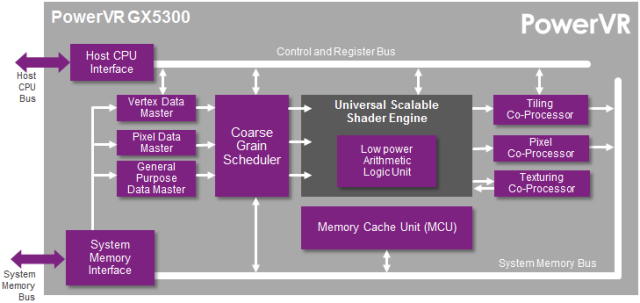Up to now most wearables are based on MCU solutions or derived from mobile platforms, which may either not provide the advanced features required by users, or consume too much power and take more space than needed. With Ineda Dhanush and Mediatek Aster, we’ve already seen silicon vendors design wearables SoCs, and now Imagination Technologies has just announced PowerVR GX5300 GPU targeting wearables with support for OpenGL ES 2.0, 480p to 720p resolution, and using 0.55mm2 silicon area based on 28nm process.

PowerVR GX5300 GPU will be support Android, Android Wear, and Linux based operation systems, and according to the company has the following key features:
- Unified shaders – The TBDR graphics architecture offers unified shaders where vertex, pixel and GPU compute resources are scaled simultaneously.
- Low power and high precision graphics – All PowerVR GPUs offer a mix of low (FP16) and high precision (FP32) rendering and implement the full OpenGL ES 2.0 specification.
- Reduced memory footprint – PowerVR GX5300 supports PVRTC, a texture compression format which reduces memory bandwidth and decreases power consumption. It can help silicon vendors reduce memory costs.
Typical applications will be embedded Linux or Android-based connected home systems that require graphics rendering such as smart washing machines, and wearables running Android Wear such as smartwatches.
PowerVR GX5300 is available for licensing now, but it has not been announced in any wearable SoCs just yet, so it’s probably something we’ll see in products in 2015.

Jean-Luc started CNX Software in 2010 as a part-time endeavor, before quitting his job as a software engineering manager, and starting to write daily news, and reviews full time later in 2011.
Support CNX Software! Donate via cryptocurrencies, become a Patron on Patreon, or purchase goods on Amazon or Aliexpress



